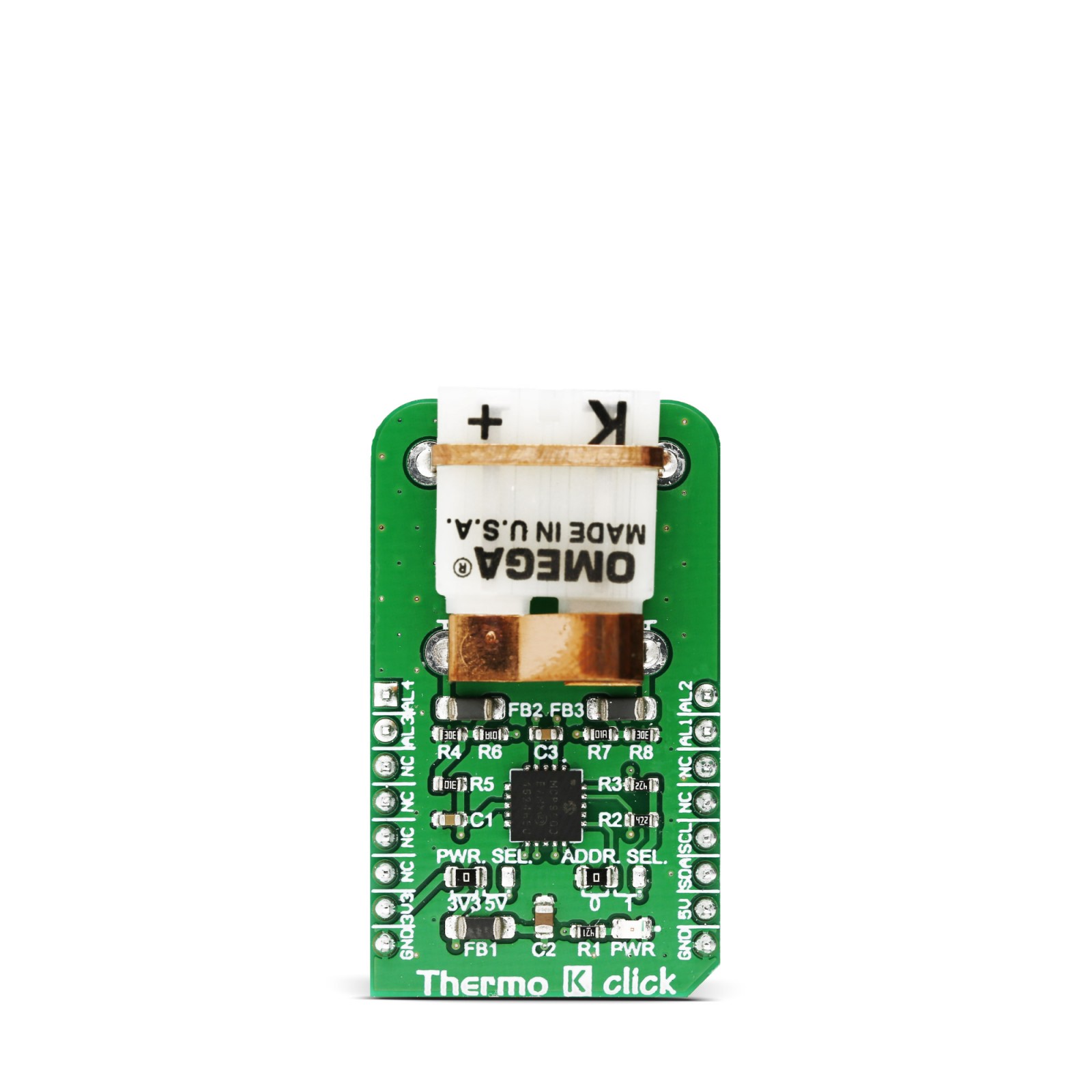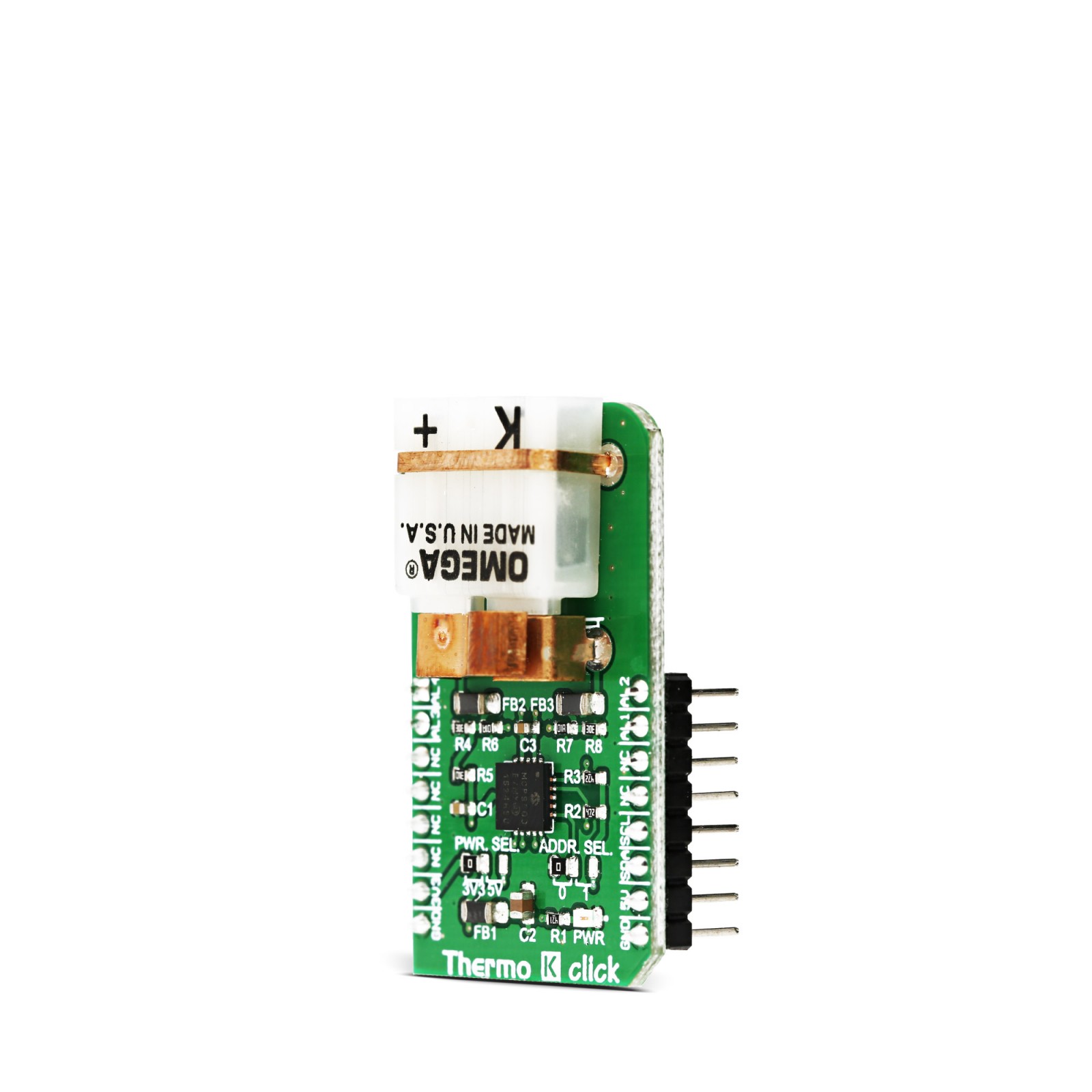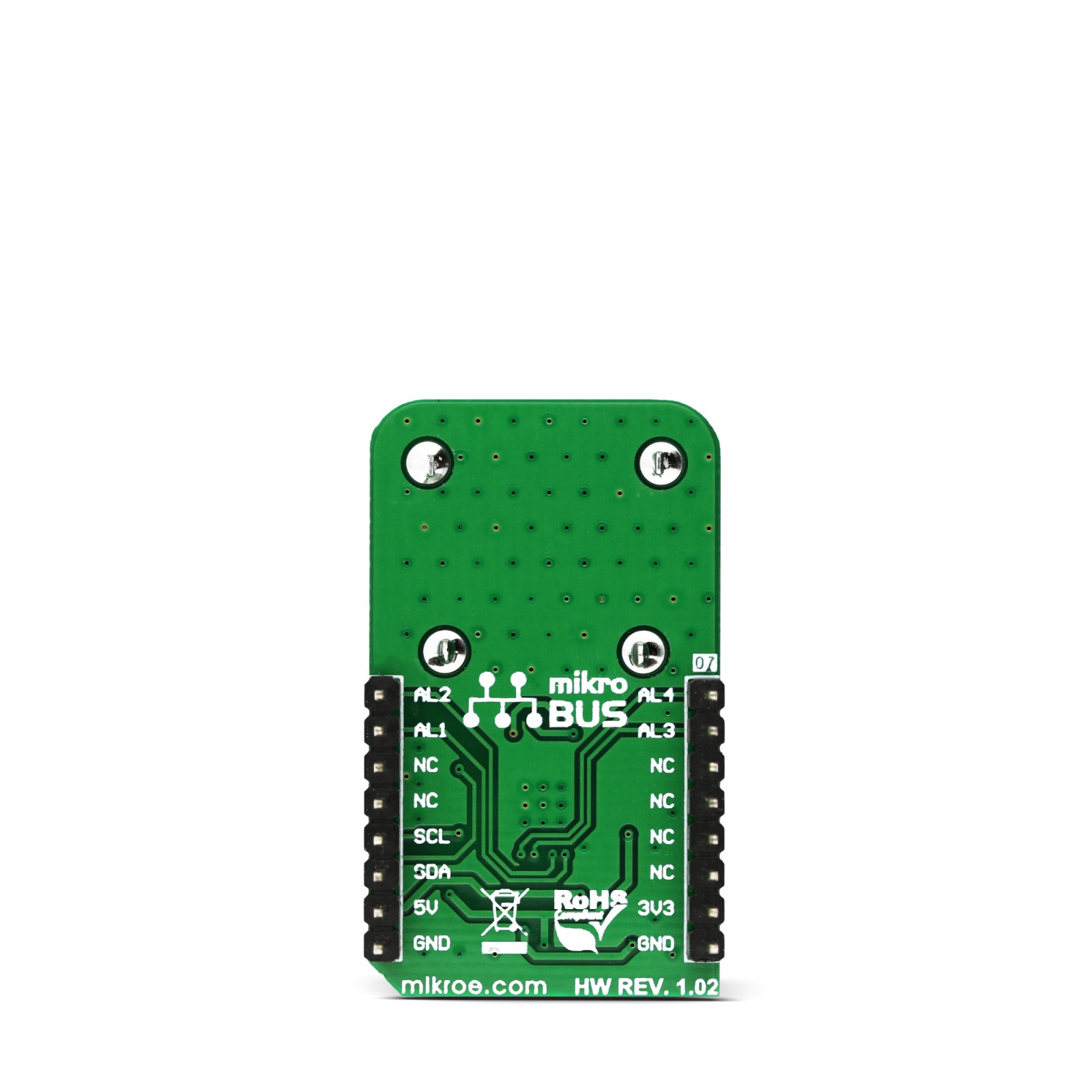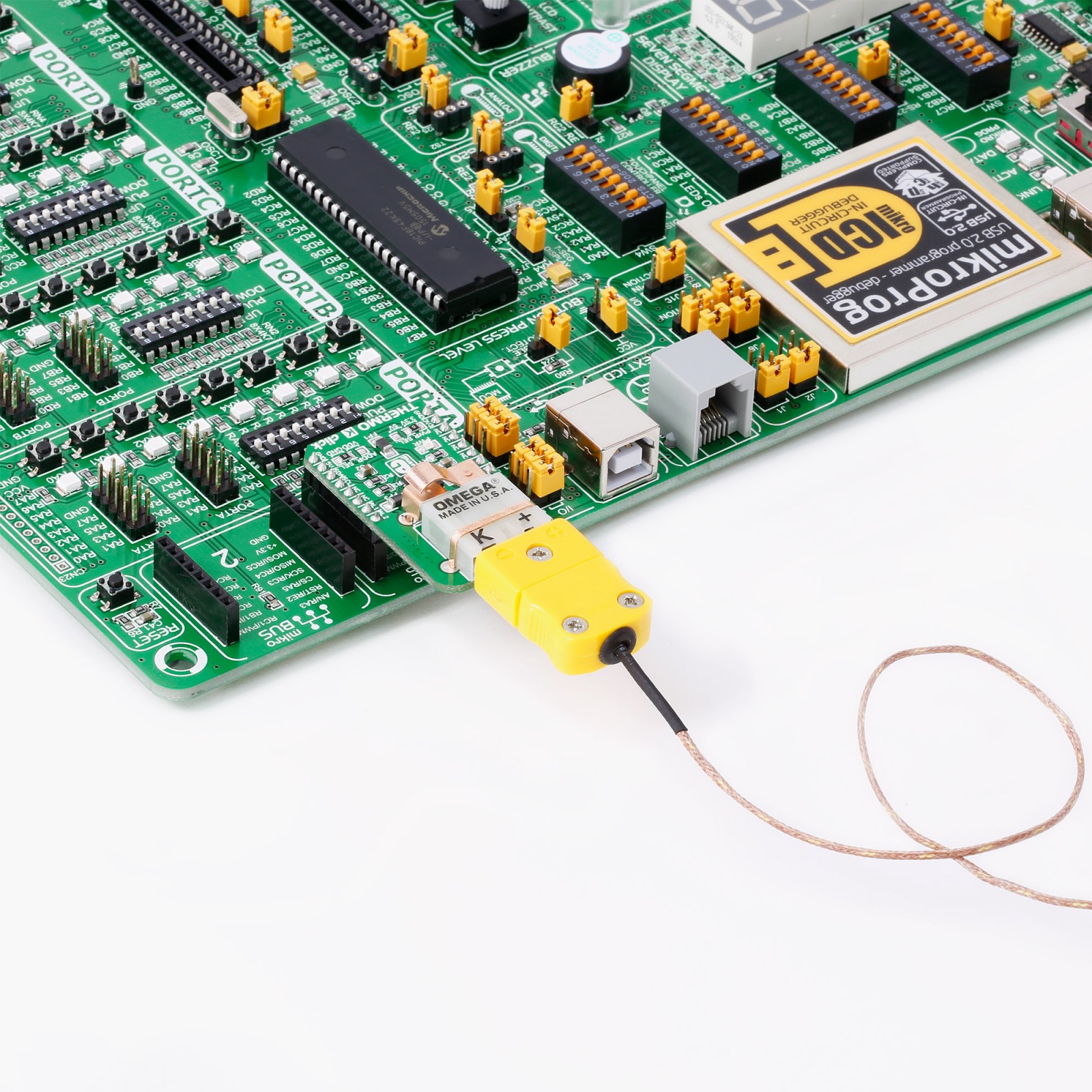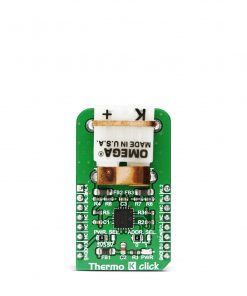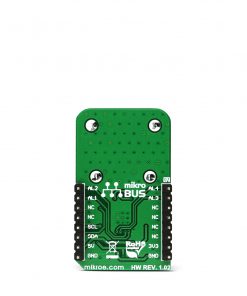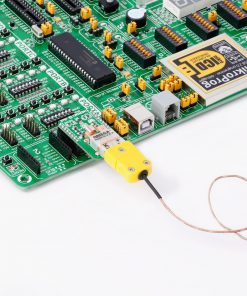Thermo K Click
R690.00 ex. VAT
Thermo K Click is a compact add-on board that serves as a thermocouple type-K probe interface for temperature measurement. This board features the MCP9600, a thermocouple EMF to temperature converter from Microchip. With the versatile type-K probe, this board enables precise temperature measurements of up to +480 °C. However, the capabilities don’t stop there. This board can theoretically measure temperatures as high as +1372 °C by simply swapping to a different probe. This Click board™ makes the perfect solution for the development of hand-held measurement equipment, industrial equipment thermal management, petrochemical thermal management, and more.
Thermo K Click is supported by a mikroSDK compliant library, which includes functions that simplify software development. This Click board™ comes as a fully tested product, ready to be used on a system equipped with the mikroBUS™ socket.
Stock: Lead-time applicable.
| 5+ | R655.50 |
| 10+ | R621.00 |
| 15+ | R586.50 |
| 20+ | R564.42 |

